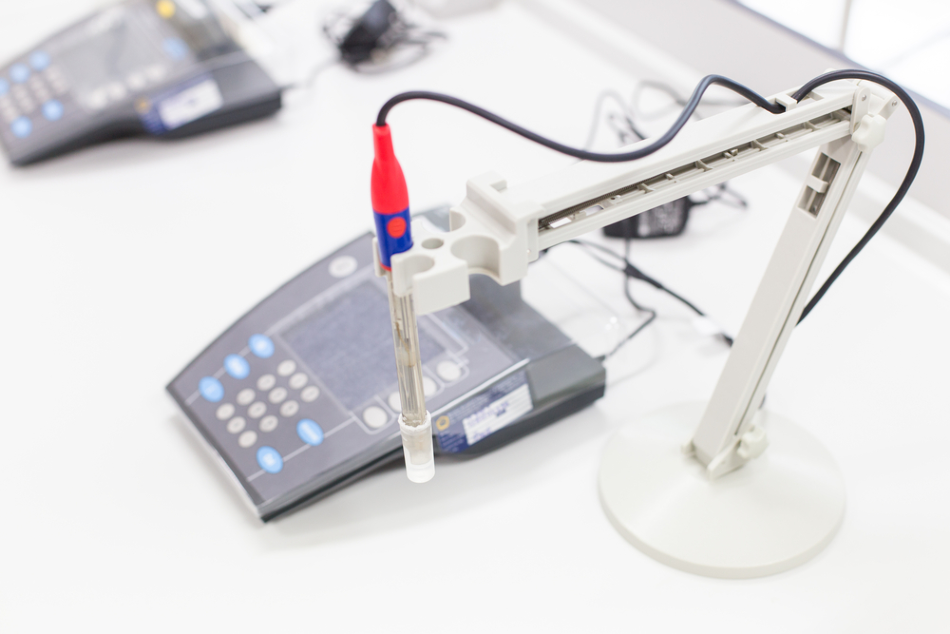By Kalwinder KaurAug 12 2013

Image Credit: Rattiya Thongdumhyu/Shutterstock.com
Article updated on 09/03/20 by Jo Finchen-Parsons
Ion-selective electrodes are membrane electrodes that produce an electrical potential by converting the activity of ions dissolved in a solution. The potential can be measured using a pH meter or a voltmeter. The first ion-selective electrode, the glass electrode, was discovered by Cremer in 1906.
The pH electrode is the most commonly used ion-selective electrode. It includes a thin glass membrane that is sensitive to the H+ concentration in a solution. The following video demonstrates the principle of a pH sensor:
Potentiometric pH measurement
Potentiometric measurement principle. Video courtesy of Endress and Hauser.
Other ions such as cadmium, bromide, fluoride, as well as gases such as nitrogen oxide, carbon dioxide, and ammonia can be measured using an appropriate membrane designed to detect and respond to the target ion.
There is a high degree of selectivity with ion-selective electrodes, which is normally determined by the structural composition of the membrane.
Types of Ion-Selective Electrodes
Different membrane materials have proved to be sensitive to the optimal responses of certain species. The following are the four main types of ion-selective electrodes:
Glass Electrodes
Glass electrodes are made of an ion-exchange type of glass membranes, and possess good selectivity, particularly for Ag+, Na+, and H +. Chalcogenide glass, however, has good selectivity for double-charged metal ions, such as Cd2+ and Pb2+.
Crystalline Electrodes
Mono- or polycrystallites of a single substance form the basic composition of crystalline membrane material. They have good selectivity as only ions can interfere with the electrode response.
Ion-exchange Electrodes
Ion-exchange resins are special organic polymer membranes containing a specific ion-exchange substance. Ion-specific electrodes are the most widespread electrodes with anionic selectivity. However, they were found to exhibit low chemical and physical durability.
Enzyme Electrodes
Enzyme electrodes are operated based on the principle that an enzyme reacts with a specific substance, and a true ion-selective electrode detects the product of this reaction. These reactions are carried out within a special membrane that covers the true ion-selective electrode.
Working Mechanism
The ion-selective electrode works based on the principle of a galvanic cell. It consists of a reference electrode, ion-selective membrane, and voltmeter.
The transport of ions from an area of high concentration to low concentration, through the selective binding of ions with the specific sites of the membrane, creates a potential difference.
This potential is measured with respect to a stable reference electrode having a constant potential, and a net charge is determined. The difference in potential between the electrode and the membrane depends on the activity of the specific ion in solution.
The strength of the net charge measured is directly proportional to the concentration of the selected ion.
The electric potential can be calibrated by direct means, standard additions, and titrations. Direct calibration is the most common means of measuring concentrations.
Applications
Some major applications of ion-selective electrodes include the following:
- Analysis of environmental samples
- Groundwater monitoring
- Fluoride detection around aluminum mills
- Biomedical laboratories measuring the concentration of ions in bodily fluids
References and Further Reading
Disclaimer: The views expressed here are those of the author expressed in their private capacity and do not necessarily represent the views of AZoM.com Limited T/A AZoNetwork the owner and operator of this website. This disclaimer forms part of the Terms and conditions of use of this website.